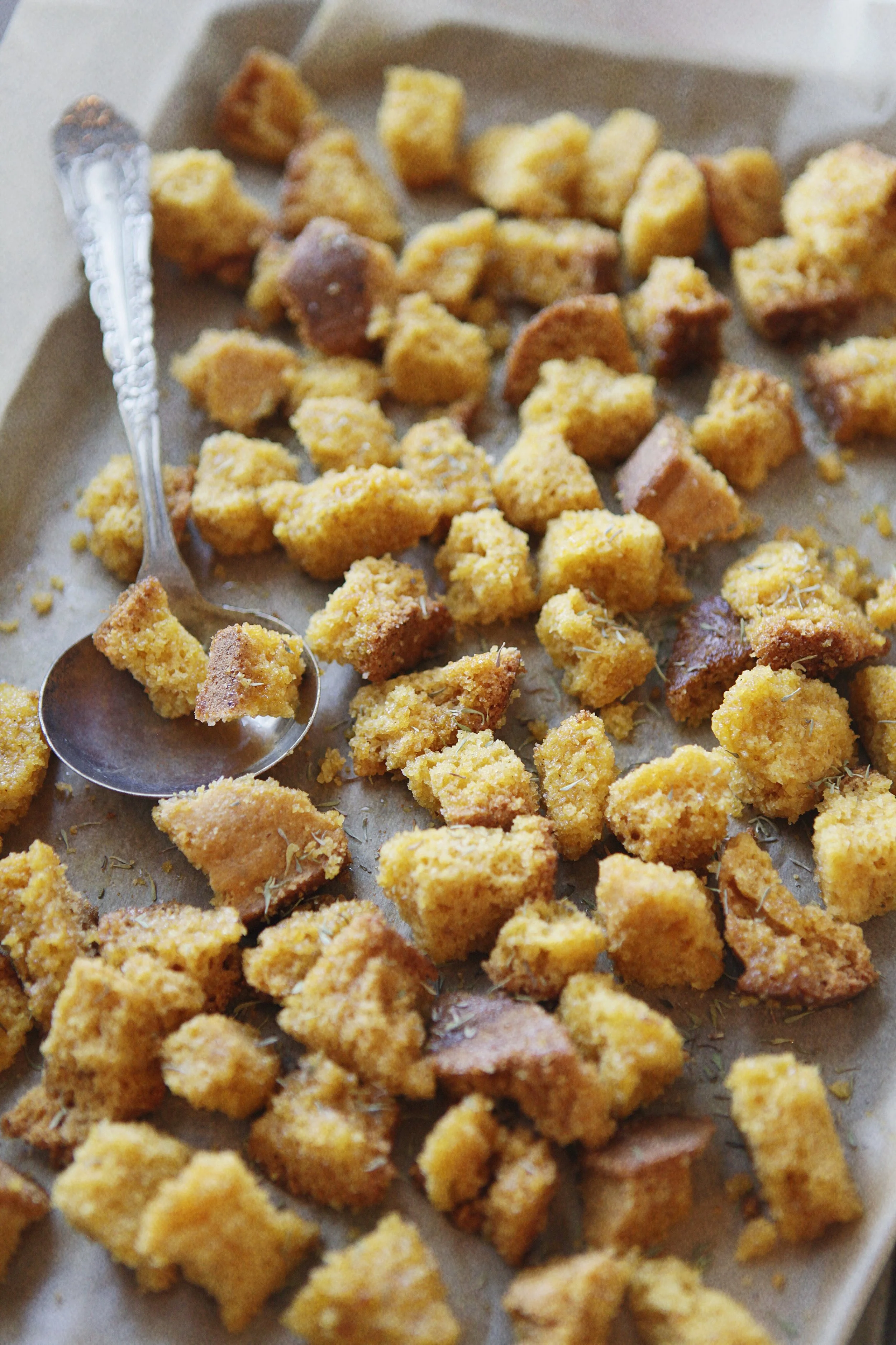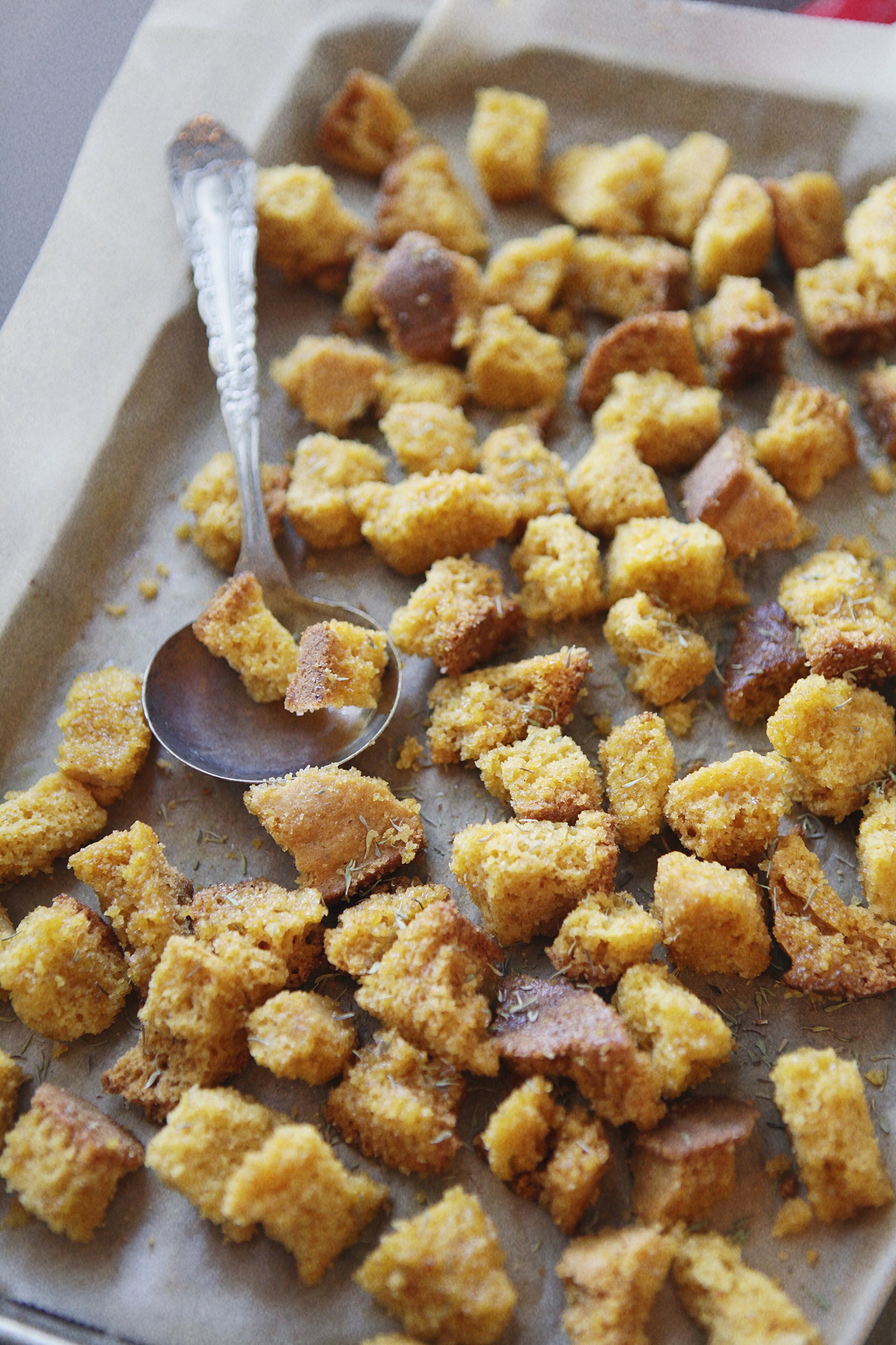6 Foods You Shouldn't Throw Away & Gluten-Free Croutons Recipe
These are the essentials of how we have reduced our household waste to an absolute minimum. We compost but we have realised over our low-waste journey that there are many foods that we can repurpose rather than return to the earth. Here are some ways we breathe new life into old food and our budget.
Bones
All meat and fish bones are excellent for making stock. Whenever we make trash chicken from The Thirlby book, which is almost every week, we use the bones to make stock. Since rescuing our puppy, Frank, we have been boiling the bones down further for him to mush into his kibble as wet food as well. In return, there is absolutely nothing that we waste with the chicken. If we already have unused stock in the refrigerator, we simply put the bones into a jar and freeze until use.
Vegetable tops and scraps
We save these in a separate jar or compostable bag in the freezer until use, away from our general compost bag. We use them to make the vegan mineralising broth from The Thirlby book, which is an alternative to bone broth, or add it to the above-mentioned bone broth. These scraps include everything from carrot tops to butts of onions and garlic.
Moldy cheese and leftover rinds
We don’t eat cheese in our house except for the Turkish feta that my husband Cameron eats now and again. However, for those who do eat har cheeses, repurposing moldy cheese and rinds is a great way to reduce waste. And no, the mold is not dangerous. Children of the Great Depression will know. Simply scrape off he mold or use the rind in soups, stews, and stocks for extra umami flavour.
Coffee grounds
Coffee grounds are rich in many minerals and elements such as nitrogen, magnesium, potassium, calcium, and other trace minerals, which make it a great booster for the garden. You can sprinkle them directly onto the soil or make a steeped tea of 2 cups coffee grounds and 5 gallons of water to use as a fertiliser. You can also use it as a body scrub in lieu of often plastic-wrapped and over-priced store options. Simply combine wet grounds with two tablespoons each of coconut oil and raw honey.
Limp vegetables
If you have a bunch of limp celery or carrots at the bottom of the crisper, don’t toss them out or compost hem. Their limpness will not be noticeable in soups, stews, or used in smoothies. You can even revive limp herbs as well as greens such as lettuce and kale by soaking them in icy-cold water for 15 minutes. If you don’t want to use them right away, you can revive wilted lettuce, celery, and herbs by giving them a cold-water soak in the sink for 15 minutes, or prop upward in a cup of water. You can also make stock from old roasted vegetables, which gives deeper, richer flavour.
Stale bread
If you’ve made cornbread for Thanksgiving last week, it is most likely a hard lump now or has unwanted crusts. Instead of composting or throwing it out, either toss them into the blender to transform into breadcrumbs or make them into croutons with the recipe below.
Gluten-free Cornbread Croutons
Ingredients
Stale cornbread
2 tablespoons olive oil per cup of cornbread
Directions
Pre-heat the oven to 350°F.
Gently toss leftover cornbread cubes in a bowl with olive oil; salt and pepper; and any dried herbs of your choice, such as thyme and rosemary.
Place cornbread cubes on a baking sheet in a single layer, leaving space between each one.
Bake for 15 minutes or until the croutons are golden brown and crisp.
These keep in an airtight large glass container for a month.
About the Author
Almila Kakinc-Dodd is the Founder, Editor-in-Chief of The Thirlby. She is also the author of the book The Thirlby: A Field Guide to a Vibrant Mind, Body, & Soul. She is currently pursuing her Master’s in Nursing as a Dean’s Scholar at Johns Hopkins University. Her background is in Anthropology & Literature, which she has further enriched through her Integrative Health Practitioner training at Duke University. She lives in the Washington, D.C. Metro Area, where she regularly contributes to various publications. She is a member of Democratic Socialists of America and urges others to join the movement.




